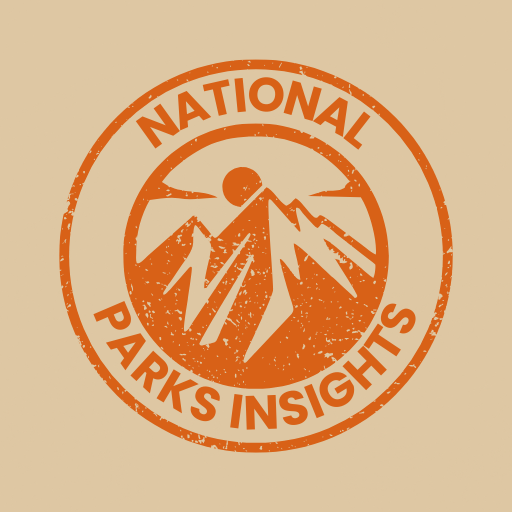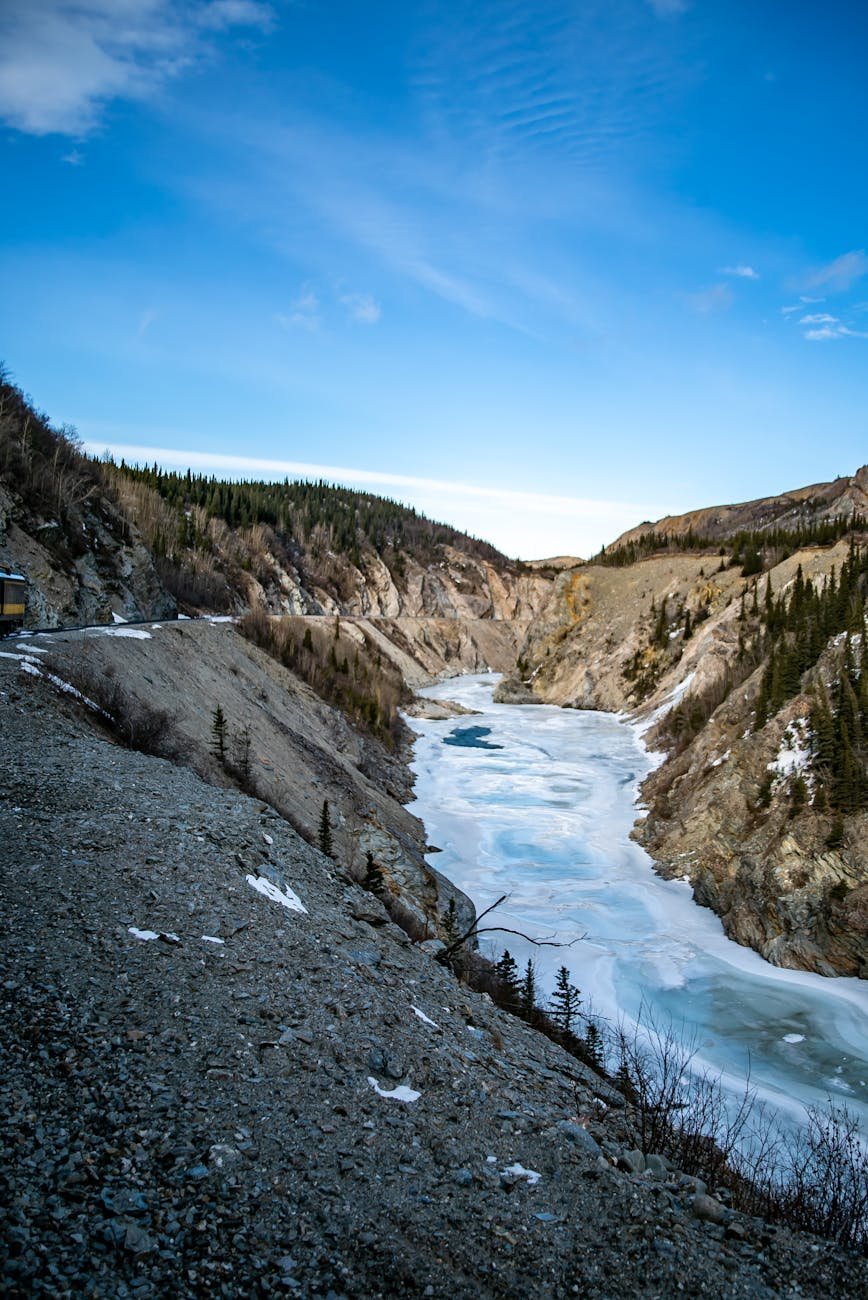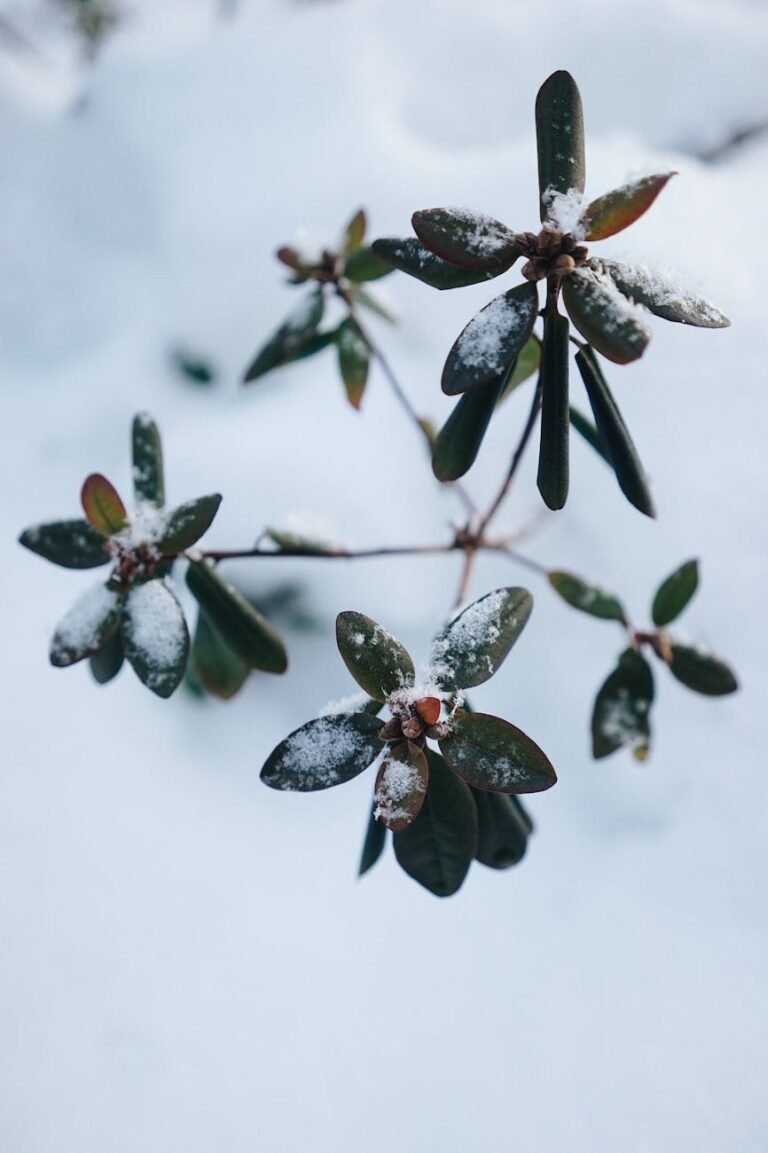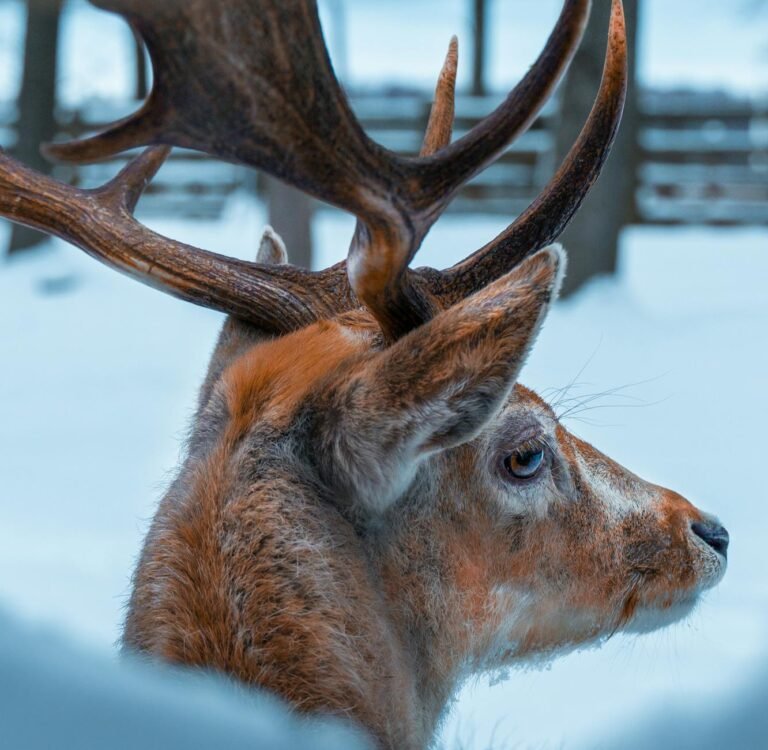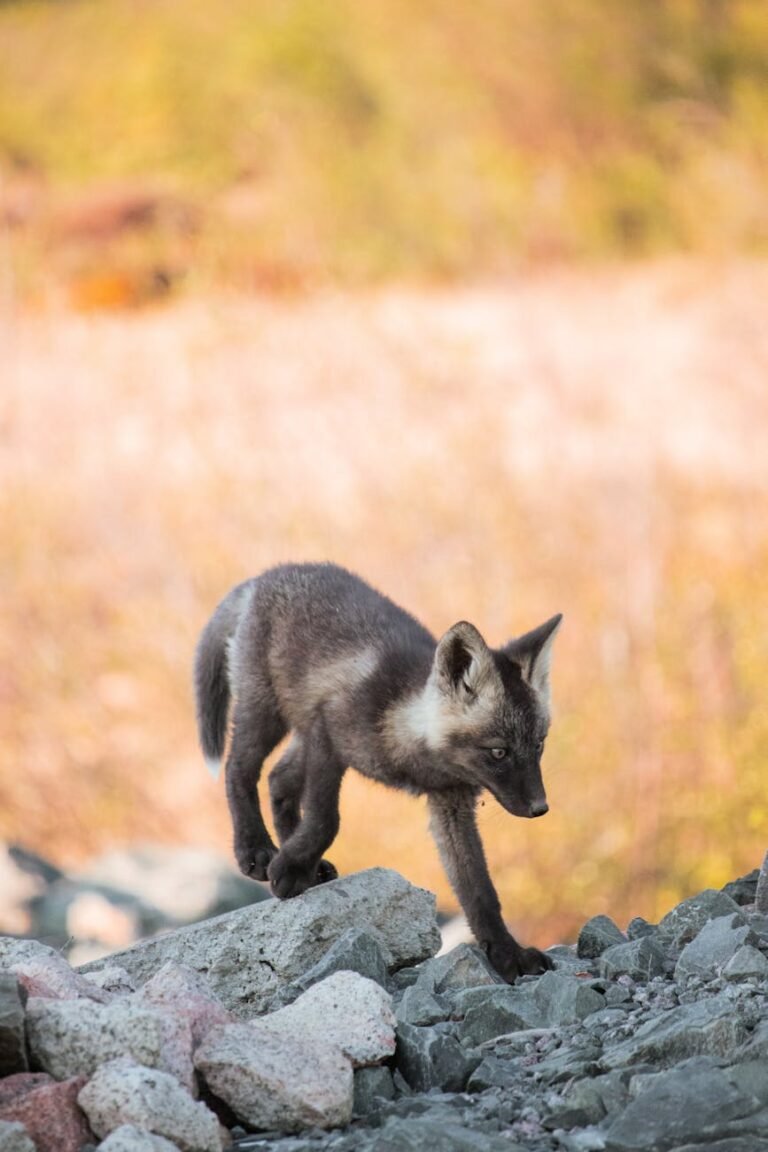Exploring Gates of the Arctic National Park
Dive headfirst into the wild, untamed beauty of Gates of the Arctic National Park. If you’re the kind of person who scoffs at civilization and chases thrill, you’ve struck gold right here.
Out of This World Views
Looking for jaw-dropping nature scenes? You’ve hit the jackpot at Gates of the Arctic. The park’s full of rugged mountains, sprawling tundra, and wild rivers that seem to have a life of their own (Alaska Itinerary). Sitting proudly as the northernmost national park in the U.S., it’s just a stone’s throw away from the Arctic Circle, nestled in the vastness of the Brooks Range Mountains, stretching over 110,000 square miles (Alaska Itinerary).
Your adventures here could have you trekking through endless tundra or paddling down a fierce river, with Mother Nature rolling out the dramatic scenery at every turn. Need a closer look? Check out the gates of the arctic national park map.
| Landscape | Features |
|---|---|
| Mountains | Jagged peaks and deep valleys |
| Rivers | Unmarked, free-flowing waters |
| Tundra | Endless fields of openness |
One-of-a-kind Wilderness Fling
Gates of the Arctic is not your run-of-the-mill park. This place truly lets you get lost in untouched wilderness, miles away from the hustle and bustle of modern life. There’s no developed infrastructure, and the only trail you’ll find is your own footprints in the snow. Expect solitude, tranquility, and a throwback connection to nature that you just don’t find these days.
Get ready to embrace your inner survivor as you tackle the backcountry. Travel tips? We’ve got ‘em in the visiting gates of the arctic national park guide.
Back in 1929, wilderness fan Bob Marshall coined “Gates of the Arctic” after two giant mountains, “Frigid Crags” and “Boreal Mountain,” which are basically the bouncers of the Arctic hanging by the North Fork of the Koyukuk River.
For explorers hungry for more, explore several spectacular things to do at gates of the arctic national park, from eyeing wild critters to hopping on guided tours. Just a heads-up: keep tabs on the gates of the arctic national park weather so those Arctic chills don’t catch you off guard.
So, are you ready to step into one of Earth’s last real wilderness havens? Gates of the Arctic National Park is calling, offering an adventure that’s anything but ordinary.
Preservation Efforts and Research Projects
Wilderness Conservation Initiatives
Keeping the Gates of the Arctic National Park as wild and untouched as possible is a big deal. About 85% of this park enjoys extra protection, making it the largest uninterrupted wilderness area in the U.S. We’re talking about 7,167,192 acres of pure, unspoiled nature (Wikipedia). These efforts aren’t just for today’s admiration but for your grandkids to see firsthand the park’s beauty and wildlife (arctic national park wildlife).
Involvement in Ecological Research
This park takes playing with nature seriously and gets involved in all sorts of projects that boost our understanding of the Arctic’s ecosystems. They’re digging into how this chilly environment ticks, especially when it comes to critters and plants (iNaturalist). Here are some cool things happening:
- Mortality in Parks Project: Keeping an eye on how different species are doing helps maintain a happy, healthy ecosystem. It’s like a fitness tracker for wildlife.
- Early Detection and Rapid Response (EDRR) Program: Part of the Arctic Network. Spotting and dealing with invaders before they mess things up is this program’s superpower (iNaturalist).
- Pollinator Tracker Project: Bees, butterflies, all the buzzing folks—this project checks up on them to keep the park buzzing with life (iNaturalist).
| Research Project | Focus Area |
|---|---|
| Mortality in Parks Project | Species mortality rates |
| EDRR Program | Invasive species monitoring/care |
| Pollinator Tracker Project | Pollinator species monitoring |
These projects are like the park’s secret to keeping its wildlife show going. By cracking into these ecological mysteries, park management can whip up top-notch strategies for conserving its natural wonders, adding a rich layer to your Gates of the Arctic National Park visit.
Curious about what kind of weather to pack for? Peek at the gates of the arctic national park weather. Fancy stepping into this slice of wild? Check out the arctic national park tours to see conservation in action.
Wildlife Diversity in the Park
Gates of the Arctic National Park is like a wildlife amusement park, only the rides are living, breathing creatures running around in their vast, untouched territory. Here you’ll stumble across all kinds of animals and birds, test-driving their survival skills in the wild, rugged outdoors. Let’s take a peek at the gang that resides there.
Iconic Animal Species
In the endless openness of Gates of the Arctic, you’ll bump into some seriously headline-worthy animals. Take a walk around the Central Brooks Range or watch patiently by the rivers, and you’ll have front-row seats to nature’s great show: from caribou going on daunting migrations, to the mighty grizzly bears fishing like they’re at an all-you-can-eat buffet, and even arctic ground squirrels doing their wintertime survival dance. Then there’s the little lemmings and voles, serving as popcorn for the bigger critters. Plus, if fishing’s your jam, whitefish, northern pike, and grayling are splashing about in the park’s waters.
Here’s a glance at the stars of the show:
| Animal Species | Why They’re Awesome |
|---|---|
| Caribou | They rule the runway with their epic antlers and long-distance wanderlust. |
| Grizzly Bears | These hefty bears love fishing by the rivers like pros. |
| Black Bears | Slightly smaller but just as charismatic as their grizzly cousins, roaming far and wide. |
| Arctic Ground Squirrels | They’re nature’s little Ice Age warriors, battling through harsh winters. |
| Lemmings and Voles | Tiny morsels that keep the Arctic dinner parties alive for the bigger beasts. |
Get the scoop on all the critters by hopping over to our arctic national park wildlife article.
Unique Bird Migrations
For the bird nerds among us, get ready for a feathered fiesta! Gates of the Arctic is a bird paradise where you can watch these high-flyers make epic migrations. Birds here chow down on a buffet of high-protein bugs, with mosquitoes being on the top of the menu. One of the all-stars here is the arctic tern. Talk about a globetrotter—this bird flies all the way from Antarctica to the Arctic as if its GPS went haywire (National Park Service).
Here are the feathered friends making tracks:
| Bird Species | Migration Journey |
|---|---|
| Arctic Tern | It’s on a non-stop express from Antarctic waters to the Arctic, seriously upping its frequent flyer miles. |
| Snowy Owl | Flaps over to the Arctic tundra for breeding season shenanigans. |
| Gyrfalcon | Sticks around year-round but loves to chase the migrating prey for a good meal. |
Check out our guide on park activities if you’re keen to partake in birdwatching or other cool stuff.
Gates of the Arctic National Park isn’t just a visit; it’s a wildlife spectacle that puts you smack dab in the middle of nature’s grand performance. Curious about popping over? Check out our tips for visiting the park and what to expect from the weather.
Survival Strategies in Arctic Conditions
The Gates of the Arctic National Park isn’t just a pretty face in the wild; it’s a fierce test of nature’s survival skills. It’s where animals show off their extreme weather kung fu in the harshest winters. Let’s check out how these crafty critters keep their cool in such crazy conditions.
Winter Adaptations of Animals
Animals around here are the champs of cold-weather innovation, pulling out the stops to survive those long icy months. Here’s a look at their most impressive tricks:
- Caribou and Moose: Think of them as the smart ones who hang out in the thick boreal forests. Those trees ain’t just for show—they block out the wind and keep things from getting too nippy.
- Voles and Lemmings: Tiny but mighty, these guys dig their own little forts under the snow, which acts like Mother Nature’s blanket to keep them toasty.
- Ground Squirrels: They go full-on lazy mode underground, chilling out and hitting the slow-mo button on their metabolism to save energy.
- Bears: More like light snoozers than deep snoozers, bears do this half-hibernation thing, living off their own body fat reserves.
- Fish: These slick swimmers slow it down and head for the deep end, hanging out below the ice where the water’s still.
- Beavers: Homebodies through and through, they hunker down in their lodges—the original survivalist dens—gnawing on winter snacks they’ve stocked up.
For the scoop on more wildlife brilliance, swing by our arctic national park wildlife page.
| Animal | Winter Trick |
|---|---|
| Caribou | Boreal forest chill zone |
| Moose | Boreal forest chill zone |
| Voles | Snow tunnel snuggles |
| Lemmings | Snow tunnel snuggles |
| Ground Squirrels | Underground snooze fest |
| Bears | Sleepy time (but not too deep) |
| Fish | Chill at the deep end |
| Beavers | Lodge lounging & food hoarding |
Challenges and Strategies for Winter Survival
Arctic winters are like Mother Nature’s boot camp, complete with freezing temps, not much food, and darkness. Here’s how local wildlife makes the cut:
- Food Shortage: Animals like squirrels and bears play it smart, bulking up ahead of time to have enough fuel. Beavers, on the other hand, stash away snacks for when the cupboard is bare.
- Crazy Cold Temps: Ptarmigans go all out by growing feathers on their feet for the ultimate snowshoe effect, and they’ve got the snow diving thing down-pat for warmth.
- Activity Time-Out: Lots of critters just take a breather, like some fishes that check out and drift to calm waters under the ice.
Without bugs and seeds around, birds like ptarmigans have to get inventive with their menu and move around when the mercury drops.
For survival hacks and a peek into the park’s wildlife life hacks, dive into our arctic national park tours article.
By tuning into these cunning survival skills, you’ll feel the awe of how the park’s creatures roll with the punches. Whether you’re trip-talking or just stoked on nature’s genius, the Gates of the Arctic National Park is a treasure chest of exploration and learning.
Park Size and Wilderness Designations
Tucked away in the far reaches of northern Alaska, Gates of the Arctic National Park and Preserve beckons with its vast, untouched beauty. Here’s more about its size and its special wilderness designation.
Big Park, Big Adventure
Visiting Gates of the Arctic National Park lands you in one of the biggest protected areas across the U.S. This mammoth park spans 8,472,506 acres, or if you prefer miles or kilometers, that’s 13,238 square miles or around 34,287 square klicks (Wikipedia). With this much wild space, get ready for some serious alone time and exploration.
| Park Feature | Area (acres) | Area (sq mi) | Area (km²) |
|---|---|---|---|
| Gates of the Arctic National Park and Preserve | 8,472,506 | 13,238 | 34,287 |
The park’s got it all—from craggy mountains to lush river valleys, offering a raw wilderness experience. If you want to zoom in on specific areas, check out the Gates of the Arctic National Park map.
Wilderness Badge of Honor
About 85% of Gates of the Arctic National Park enjoys extra protection as the Gates of the Arctic Wilderness. This part is a whopping 7,167,192 acres (or in fancy talk, about 2,900,460 hectares). It hooks up with the Noatak Wilderness, creating the giant wilderness area in the U.S..
| Wilderness Area | Coverage (acres) | Coverage (hectares) |
|---|---|---|
| Gates of the Arctic Wilderness | 7,167,192 | 2,900,460 |
| Noatak Wilderness | Part of Contiguous Area | Part of Contiguous Area |
This wilderness status keeps the park’s natural vibes intact, free from the noise of development, allowing you to soak in true peace and quiet. It also helps save some pretty unique plants and critters, keeping conservation efforts on track.
Whether you’re up for a hike, eager to spot some wildlife, or just want to bask in the stunning views, this wild patch has endless things to do in Gates of the Arctic National Park. For trip-planning tips, swing by our Arctic National Park travel guide.
Accessing Gates of the Arctic
Getting to the untouched wonder of Gates of the Arctic National Park is an adventure you’ll never forget. It’s remote, rugged, and doesn’t come with the usual tourist-friendly amenities. Let’s dive into how you can make your way to this wild frontier and some of the unique hurdles you might face.
Transportation Options
You’re likely to kick off your Arctic adventure from Fairbanks, Alaska. You can catch daily flights to the nearby communities that serve as entry points to the park.
| Gateway Community | Travel Mode | Notes |
|---|---|---|
| Bettles | Airplane | Daily flights from Fairbanks. Authorized air taxi services available for park entry. |
| Anaktuvuk Pass | Airplane | Daily flights from Fairbanks. Hiking into the park from here is an option, but permission to cross native land is required. |
| Coldfoot | Airplane, Car | Drive up the Dalton Highway or hop on a commercial flight from Fairbanks. Facilities like air taxi services, motels, and campsites are available. |
For more deets, the official NPS.gov site has you covered.
If you prefer things organized and hassle-free, consider booking arctic national park tours for a guided experience.
Remote Access and Challenges
Making your way to the Gates of the Arctic isn’t something you do on a whim. It’s about planning and tackling the quirks of its remote charm.
- No Roads or Trails: You won’t find roads or trails leading you into this expansive land. Most folks fly in with air taxis, which come with either floats for water landings or sturdy tundra tires (NPS.gov).
- Hiking Options: Love a good hike? Two main options are from the Dalton Highway and Anaktuvuk Pass. The highway runs close to the park’s east side; however, expect a few river crossings to make your way in (NPS.gov).
- Travel Considerations: Driving down the Dalton Highway is a visual feast, but don’t expect the usual pit stops—it’s mostly just gravel and daring adventure, suitable for those who like a challenge (NPS.gov).
- Native Lands: When venturing in from Anaktuvuk Pass, you’ll encounter native lands around the airstrip. You’re free to cross these lands, but remember to ask for permission if you intend to camp (NPS.gov).
Given these factors, preparation is the name of the game. For more insights into what you might expect, check out our articles on gates of the arctic national park weather and visiting gates of the arctic national park.
Summary of Access
| Access Point | Mode of Entry | Challenges/Considerations |
|---|---|---|
| Dalton Highway | Hiking | Rough roads, no amenities, need to cross rivers |
| Anaktuvuk Pass | Hiking | Must get permission for native land, no direct road |
| Bettles, Coldfoot | Air Taxi | Remote spots, flights depend on weather conditions |
Armed with this info, your journey into America’s wild corners will be both thrilling and safe. Dive deeper into your planning with more tips at visiting gates of the arctic national park.
Historical Significance and Recognition
Jump into a blast from the past with Gates of the Arctic National Park. Let’s uncover where the park got its curious name and check out some iconic spots that’ve earned top-notch natural status.
Origin of the Park’s Name
Back in 1929, a wilderness enthusiast named Bob Marshall gave this park its nifty name. Captivated by its jaw-dropping sights, Marshall christened two mountains – “Frigid Crags” and “Boreal Mountain.” These peaks stand as the grand gateway to the Arctic in the North Fork of the Koyukuk River.
| Feature | Name | Year Named |
|---|---|---|
| Mountains | Frigid Crags, Boreal Mountain | 1929 |
| River | North Fork of the Koyukuk River | – |
Curious for more tidbits? Peek into the park’s history and significance.
National Natural Landmarks
Gates of the Arctic struts some stellar natural landmarks that’ve been singled out for their rockin’ geology and biology. Arrigetch Peaks and Walker Lake picked up their national landmark badges in 1968. They show off the park’s wild variety—from cool mountain communities to cozy boreal forests.
| Landmark | Designation Year | Notable Features |
|---|---|---|
| Arrigetch Peaks | 1968 | Rugged Peaks with Geological Mojo |
| Walker Lake | 1968 | Energetic Alpine Ecology |
Planning a trek to these highlights? Check out our handy visitor’s guide.
Gates of the Arctic National Park is more than just a trip; it’s a plunge into history and nature. Whether you’re snagged by the park’s storied past or its standout sights, each visit promises an awesome and memorable experience. Don’t forget to scope out tours and accommodations if you’re gearing up to explore these treasures.
Visitor Statistics and Park Features
Wanna break away from the hustle and get lost in raw, untapped nature? Gates of the Arctic National Park is calling your name. Let’s dive straight into this geeky stuff about who’s been visiting and all the jaw-dropping sights waiting for you.
Visitor Statistics Overview
If you’re the type who likes to have nature all to yourself without someone photobombing your outdoor selfies, then you’ve hit the jackpot! Gates of the Arctic National Park is basically the VIP lounge of US national parks with barely 9,457 folks showing up in 2022. Meanwhile, it’s sibling parks like the Grand Canyon and Zion were having a party with millions stopping by (Alaska Itinerary).
Check out the list where Gates of the Arctic stands on its own:
| National Park | Number of Visitors (2022) |
|---|---|
| Gates of the Arctic | 9,457 |
| Grand Canyon | 4,732,101 |
| Zion | 4,692,417 |
| Yosemite | 3,667,550 |
So yeah, it’s practically an untouched slice of wilderness heaven! No elbowing through crowds here—you’ve got nature’s theater all to yourself. Fancy more tidbits? Head over to gates of the arctic national park facts.
Natural Attractions and Features
We’re not just talking vast swathes of land here; Gates of the Arctic sprawls across a mind-blowing 8.4 million acres. Imagine everything from towering peaks in the Brooks Range to crisp river valleys and clear streams (Wikipedia).
Here are the rockstars of this untouched wonder:
- Brooks Range: It ain’t just about cardio—these mountains offer views you won’t believe and hikes that’ll test your limits.
- Wild rivers: The Noatak, Alatna, Kobuk, and John rivers flow through, offering top-notch spots for paddlin’ and fishin’.
- Caribou migrations: Picture this: massive herds of caribous striding across the tundra—a photo-op you don’t even see in movies.
- Aurora Borealis: Get ready to be starstruck (or should I say, lightstruck?) with those Northern Lights putting on a show overhead.
Up for some adventure ideas? Sneak a peek at our things to do in gates of the arctic national park for cool activities. Curious about who you might meet on your trek (we’re talkin’ about animals, folks)? Then check out arctic national park wildlife.
So whether y’all are all set to pack your bags or just daydreaming about it, these snaps of info about visitor stats and natural wonders will get you pumped for what this Arctic paradise has to offer. Wanna plan it right? Snooze through our tips on the arctic national park travel guide.
